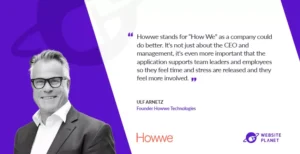In a world perpetually engulfed by volatility, uncertainty, complexity, and ambiguity (known as VUCA), how do leaders steer the helm with courage and conviction? In the relentless tides of transformation, leaders often find themselves at crossroads where fear and courage collide. We must question, has the realm of leadership always been shrouded in VUCA, or is it a newfound challenge?
Understanding VUCA: A Leadership Perspective
The VUCA environment, although omnipresent, should not be a cloak behind which leaders conceal their apprehensions and use it as an excuse for inaction. Leaders, especially in regions like Australia and New Zealand, are often subjected to the “tall poppy” syndrome, where protruding heads are swiftly cut down. It’s vital for leaders to transcend this conventional mindset, embracing uncertainty with boldness, hope and vigour.
Decision-Making: Balancing Collaboration and Command
Leadership is a canvas painted with decisions. A collaborative approach is commendable, but an excess could lead to decisional paralysis. Striking a balance is crucial. Leadership style in the ANZ region is often collaborative because of democratic and egalitarian system in which we live and as we know it’s not been seen as a good thing to be the “tall poppy”! However, leaders need to beware of almost being overly collaborative because after all leadership is also about being courageous, making decisions and acting. Collaboration can easily morph into decision-by-committee, where the fear and risk of the unknown breeds inaction. Decision-by-committee can certainly avoid confrontation however not dealing with the issue at hand in a decisive and clear way and may consign the company to repeat the mistakes of its past. Remember the sagas of Kodak, and Blockbuster? All had the capability to innovate in the digital space and were leaders in their classes at the time. All had innovative competitors bringing new challenges which demanded leadership to rethink what was most important to the company. Which CEO at the time would have had the courage to convince shareholders that they must invest substantial sums in an evolving digital market and be prepared to forgo revenues from producing and processing camera film or renting videos? However, inertia and indecision were to become their tombstones of innovation and adaptability.
Decision making is not an absolute
Decision making is not absolute right or wrong, it is a continuum, as highlighted by Tannenbaum-Schmidt (Tannenbaum-Schmidt Continuum) from the extreme of “telling”, to the other extreme of “abdication”. It’s important for leaders to understand the environment in which they operate. On Apollo 13’s return flight home certain decisions not taken or taken could have been fateful; this is such a great model of micro-delegation in action and setting most important goals quickly. It was not a question of micro-management, where leaders are overly controlling of their team members, as the team had to parallel process so much information in a short period of time. Taking calculated decisions at each point; each point getting them closer to the goal of getting the astronaut’s home. At each point there were risks and a robust discussion in and between about the risks and then there was a commitment to actioning what was agreed. Doing nothing and not acting or embracing change would have been fatal.
Embodying Courage in Everyday Leadership
Courage in leadership is not solely about heroic deeds in tumultuous times. It’s woven into the fabric of daily decisions and actions. It could be as courageous questioning why you are doing certain work, or that you don’t have enough work, rather than just trying to look busy. It could be holding your employees or peers to account for a deadline they missed and why that was so important to the project. It could be just having the courage to be honest and realistic with teammates, your bosses, or your shareholders. Use the opportunity a situation gives you to coach them to improve their performance for next time, rather than ignoring the opportunity presented. In exhibiting courage as a leader, you may need to be empathetic towards a staff member when they are having tough times. Having the courage to be open about your own personal experiences to them, and what helped you at the time, how you coped or didn’t, may be what they need to hear at that time, that they aren’t alone or the first person to go through that.
These are all actions that demonstrate courage in the moment. Being a more courageous leader than you were yesterday, even if you take only small steps, may make work more enjoyable and rewarding for you as well as for your team.
Strategies for Courageous Leadership
- Embrace the VUCA environment as a landscape of opportunities rather than threats.
- Foster a culture where open dialogues and constructive criticisms are encouraged.
- Prioritize empathy and emotional intelligence in leadership situations.
- Prioritise taking decisions when you are satisfied with the chosen path.
- Acting does not mean being rash or impatient. Your action under pressure could be calling for more data analysis to support the eventual decision, delegate to a new team, revise a goal, pivot to a new strategic initiative, close a meeting early as it is not meeting what you expected, and set a date for a new meeting by when you expect to have the data to support a decision.
- Not setting a clear goal, initiative or agreeing a next action, is abdicating your responsibility as leader and avoiding your responsibility for driving change.
Leading with Bolder Hearts
Leadership is a journey for the courageous. Small increments of learning and demonstrating your own version of courage will culminate in a leadership style that resonates across your organisation; genuine, trustworthy, resilient, bold, and adaptable.
What are your experiences or examples of leading with courage or what (small) steps will you take today to be a more courageous leader?
Article by Stephen Bowhill, MD of Howwe ANZ.





